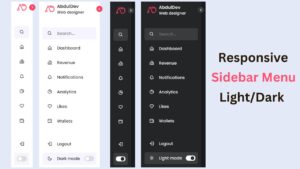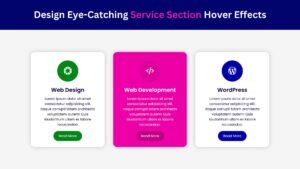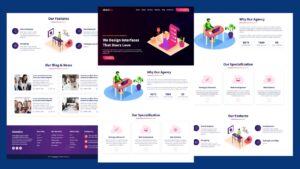
The Ultimate Guide to Becoming a Graphic Designer
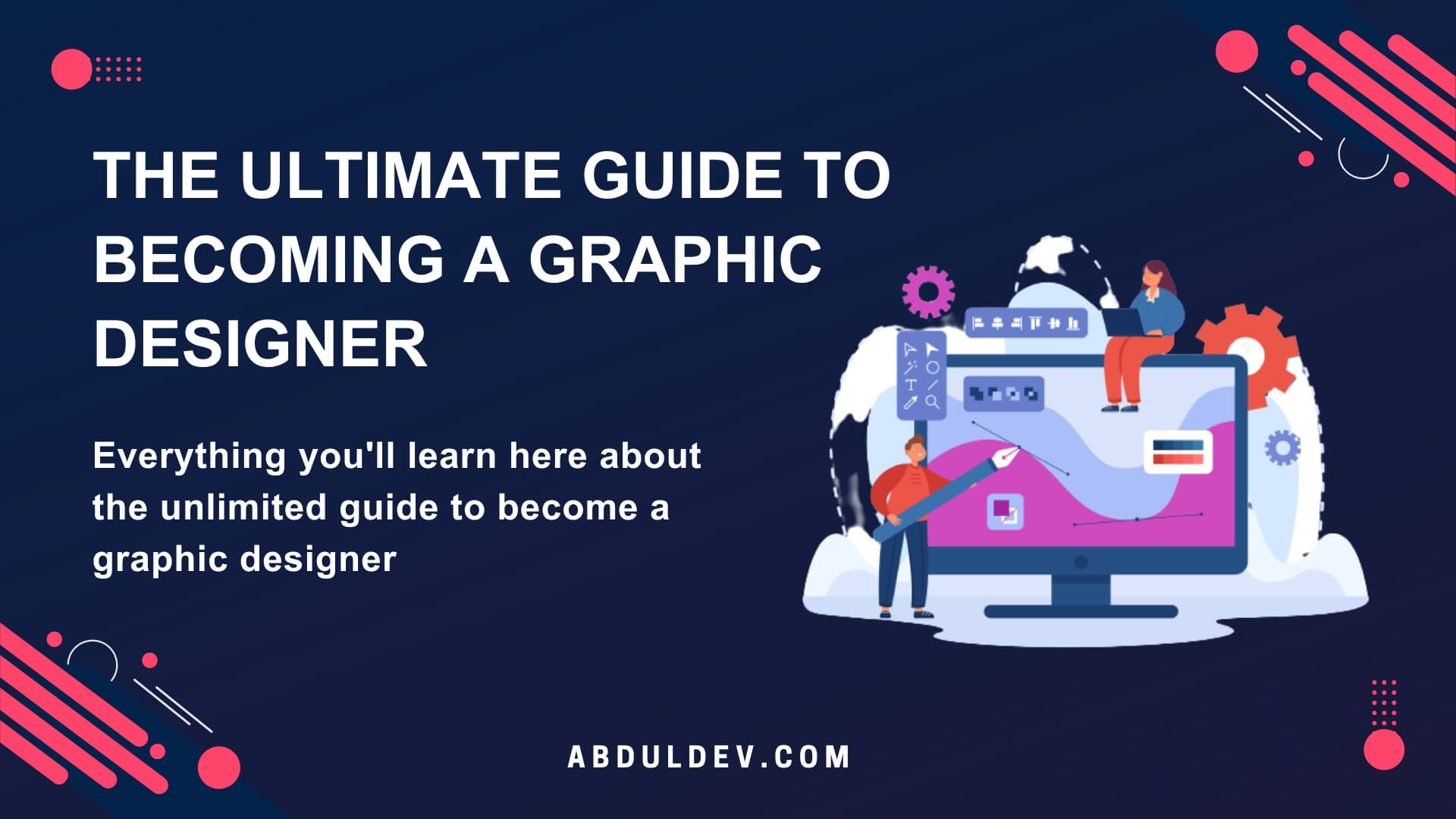
In today’s highly competitive digital landscape, search engine optimization (SEO) has become a cornerstone for online success. Whether you’re a business owner, marketer, or blogger, understanding the different types of SEO is crucial for driving traffic, improving search rankings, and achieving your goals. This article delves into the significance of knowing various SEO types and how they contribute to a well-rounded optimization strategy.
What is Graphic Design?
Graphic design is the art and skill of creating visual concepts to communicate a message to a target audience. It involves combining text and images to convey an idea or information effectively. Graphic designers use graphic design software such as Adobe Photoshop and Illustrator to create product packaging, visual designs for websites, social media posts, and various print and digital media. A good graphic designer should have excellent communication skills and be able to interpret project requirements from project managers, creative directors, and art directors. They should also stay updated on design trends to create modern and appealing designs. Building a solid professional portfolio is essential for success in graphic design.
Why Become a Graphic Designer?

You should consider pursuing a career in graphic design. For starters, graphic design is a versatile and exciting field that allows you to combine your artistic talents with your love for technology and innovation. As a graphic designer, you have the opportunity to work on a variety of projects and with clients across various industries.
Another reason to become a graphic designer is that it offers excellent career prospects and financial rewards. A skilled graphic designer with a strong portfolio can command high salaries and enjoy many job opportunities.
Moreover, graphic design skills are highly transferable and can be applied to various fields, such as marketing, advertising, web design, and more. If you have a passion for creativity and an eye for detail, a career in graphic design could be the perfect fit for you.
Essential Skills for Graphic Designers
Graphic design is a dynamic field that demands a broad set of skills to excel. While some skills can be developed over time, others are inherent in a graphic designer’s personality. Here are some essential skills that every graphic designer must possess:
- Creativity: Graphic designers need to come up with creative and innovative ideas to make designs that stand out. It is important to develop a unique style and perspective to make your designs recognizable.
- Attention to detail: Every element needs to be perfect in graphic design. A slight mistake can make a design look unprofessional. Graphic designers need to be meticulous and detail-oriented in their work.
- Technical skills: Graphic designers must understand design software such as Adobe Creative Suite, Sketch, and Figma. They also need to know about typography, color theory, and layout.
- Communication skills: Graphic designers must have good communication skills to effectively convey their ideas and designs to clients and team members. They also need to be able to accept feedback and incorporate changes into their designs.
- Time management: Graphic designers must manage their time efficiently and meet deadlines. They often work on multiple projects simultaneously and must prioritize their work accordingly.
- Collaboration: Graphic designers often work in a team, collaborating with other designers, writers, and developers. They must work well in a team environment and be open to feedback and criticism.
These essential skills will help graphic designers succeed in their careers. As with any skill, practice and dedication are crucial to improving. Graphic designers must continuously develop their skills and stay up-to-date with the latest design trends and technology.
Steps to Become a Graphic Designer
If you’re interested in pursuing a career in graphic design, here are some steps you can take to achieve your goals:
- Develop your creativity and design skills: As a graphic designer, you must be highly creative and possess strong design skills. Take classes in art and design to develop your skills, and practice creating scenarios in your free time. Use design software, such as Adobe Creative Suite, to hone your abilities.
- Get a formal education: Although not strictly necessary, formal education in graphic design can be a big help in establishing yourself as a professional designer. Look for schools or programs that offer graphic design degrees, or consider taking online courses if traditional education is not feasible.
- Build your portfolio: A portfolio of your best work is essential in the graphic design industry. Build your portfolio by taking on design projects for family, friends, or local businesses. Offer to design for free or a reduced rate to gain experience and build your portfolio.
- Learn to network: Networking is crucial in the graphic design industry. Attend industry events, join professional associations, and use social media to connect with other designers, clients, and potential employers.
- Apply for internships: Internships are a great way to gain hands-on experience and make industry contacts. Look for internships with graphic design studios or advertising agencies.
- Apply for entry-level positions: Once you have built your portfolio and gained some internship experience, it’s time to apply for entry-level positions. Look for jobs in graphic design studios, ad agencies, or even in-house design positions at companies.
Becoming a graphic designer takes hard work, dedication, and a willingness to continually improve your skills. With the proper education, experience, and network of contacts, you can turn your passion for design into a rewarding career.
Education and Certifications for Graphic Designers
While there are many self-taught graphic designers, formal education can provide valuable knowledge and skills. A degree in graphic design, visual arts, or a related field can help build a strong foundation in design principles, software applications, and visual communication. Many universities and art schools offer degree programs in graphic design, ranging from associate to bachelor’s and master’s degrees. Coursework typically includes typography, color theory, layout design, and digital media classes.
In addition to formal education, certification programs are available for graphic designers. Certifications can demonstrate to potential employers that you have specialized skills and knowledge in a particular area of graphic design. Adobe, for example, offers certificates for its Creative Cloud software, including Photoshop, Illustrator, and InDesign.
Professional associations for graphic designers, such as the American Institute of Graphic Arts (AIGA), also offer membership and certification programs. Becoming a member of these organizations can provide access to networking opportunities, industry events, and resources for continuing education.
While formal education and certifications are only sometimes necessary to become a successful graphic designer, they can provide a competitive edge in a crowded job market and demonstrate a commitment to professional development. Ultimately, it is up to the individual to determine the level of education and certification that will best support their career goals and aspirations.
Building Your Portfolio
A strong portfolio is essential for any graphic designer. It’s a collection of your best work that showcases your design skills and style. As you start to build your portfolio, consider these tips:
- Show diversity in your work: Include a range of different projects that highlight your skills and expertise. For example, if you’re skilled in both print and web design, include examples of both in your portfolio.
- Highlight your process: Clients and potential employers want to know how you work. Include sketches, wireframes, and other documentation that shows your design process and how you arrived at the final product.
- Be selective: It’s better to have a smaller portfolio of your best work than a larger one filled with mediocre designs. Choose the pieces that best represent your skills and showcase your range as a designer.
- Keep it updated: Your portfolio should always be a work in progress. As you complete new projects, update your portfolio to reflect your recent position and skills.
- Get feedback: Share your portfolio with other designers and ask for their feedback. Take their critiques seriously and use their suggestions to improve your portfolio.
Building a solid portfolio takes time and effort, but it’s worth it. Your portfolio will be one of the first things potential clients and employers see, so make sure it showcases your best work and represents your skills as a graphic designer.
Finding Job Opportunities as a Graphic Designer
Once you have honed your skills and created a standout portfolio, it’s time to start looking for job opportunities in graphic design. Here are a few ways to go about finding potential employers:
- Search job boards: Websites like Indeed, Glassdoor, and Monster have job listings for graphic designers. Be sure to use specific keywords to find jobs that align with your skills and interests.
- Follow design agencies: Research design agencies in your area and follow them on social media. These agencies often post job openings on their platforms.
- Attend networking events: Attend networking events like AIGA (American Institute of Graphic Arts) to meet other designers and potential employers.
- Use LinkedIn: LinkedIn is an excellent platform for finding job opportunities in any field. Ensure your profile is up-to-date and actively search for job postings or connect with people in the industry.
- Apply directly: If you have a specific company in mind, visit their website and apply directly for any open positions they may have.
Remember to tailor your portfolio and resume for each job application to increase your chances of landing an interview. It’s important to remain persistent in your job search and build your skills and portfolio despite rejection. Eventually, you will find the perfect job opportunity that matches your skill set and goals as a graphic designer. Read more about the best 10 WordPress free themes.
Tips for Success in the Field of Graphic Design
- Keep up with industry trends: As a graphic designer, it’s crucial to stay updated with the latest trends in design. Follow blogs, attend conferences and seminars, and closely monitor what other designers are doing to stay relevant.
- Practice regularly: Practice is the key to success in any field, and graphic design is no exception. Make it a habit to practice your design skills periodically and challenge yourself with new projects.
- Network with other professionals: Networking is essential in any industry, and graphic design is no different. Attend events, join online forums and groups, and contact other designers to build your network.
- Seek constructive criticism: Feedback from other professionals is vital to improve your work and grow as a designer. Feel free to seek constructive criticism from your peers and clients.
- Learn from your mistakes: Graphic design involves a lot of trial and error, and it’s crucial to learn from your mistakes. Take note of what worked and didn’t, and apply those lessons to future projects.
- Develop a strong work ethic: To succeed in graphic design, you must have a strong work ethic. Be reliable, meet deadlines, and always strive to exceed expectations.
- Stay organized: Effective time management and organization skills are essential for any designer. Keep track of your projects, deadlines, and client communication to ensure you’re always on your game.
- Embrace creativity: The field of graphic design is all about creativity, so embrace your imagination and take risks with your plans. Feel free to experiment with new styles and techniques to push your creative boundaries. Read more about the Graphic design software.
Final Thoughts
Becoming a graphic designer requires passion, persistence, and a commitment to learning. By following this guide, you can embark on a fulfilling journey that transforms your creativity into impactful designs.
FAQs
Graphic design is visually communicating ideas through typography, images, and layout. Graphic designers create visuals for various purposes such as advertisements, websites, logos, and branding materials.
Formal education can be beneficial but is only sometimes necessary. You can start by self-learning through online tutorials, books, and practice. Building a solid portfolio and gaining practical experience through internships or freelance work can also help you break into the industry.
Apart from creativity and a good eye for design, you’ll need proficiency in graphic design software like Adobe Photoshop, Illustrator, and InDesign. Strong communication, problem-solving, and time-management skills are also crucial.
Yes, Adobe Creative Suite is widely used in the industry. Familiarize yourself with Photoshop for image editing, Illustrator for vector graphics, and InDesign for layout design. Additionally, knowledge of other tools like Sketch or Canva can be beneficial.
What are some recommended online resources for learning graphic design? Answer: There are several reputable online platforms where you can learn graphic design, such as Skillshare, Udemy, and Coursera. YouTube tutorials, design blogs, and forums provide valuable insights and inspiration.
Share on Social Media
Related Articles

10 Best Freelancing Skills to Learn for Students in
Discover the top 10 best freelancing skills for students in 2025. Learn valuable, in-demand skills like Web Development, Graphic Design,
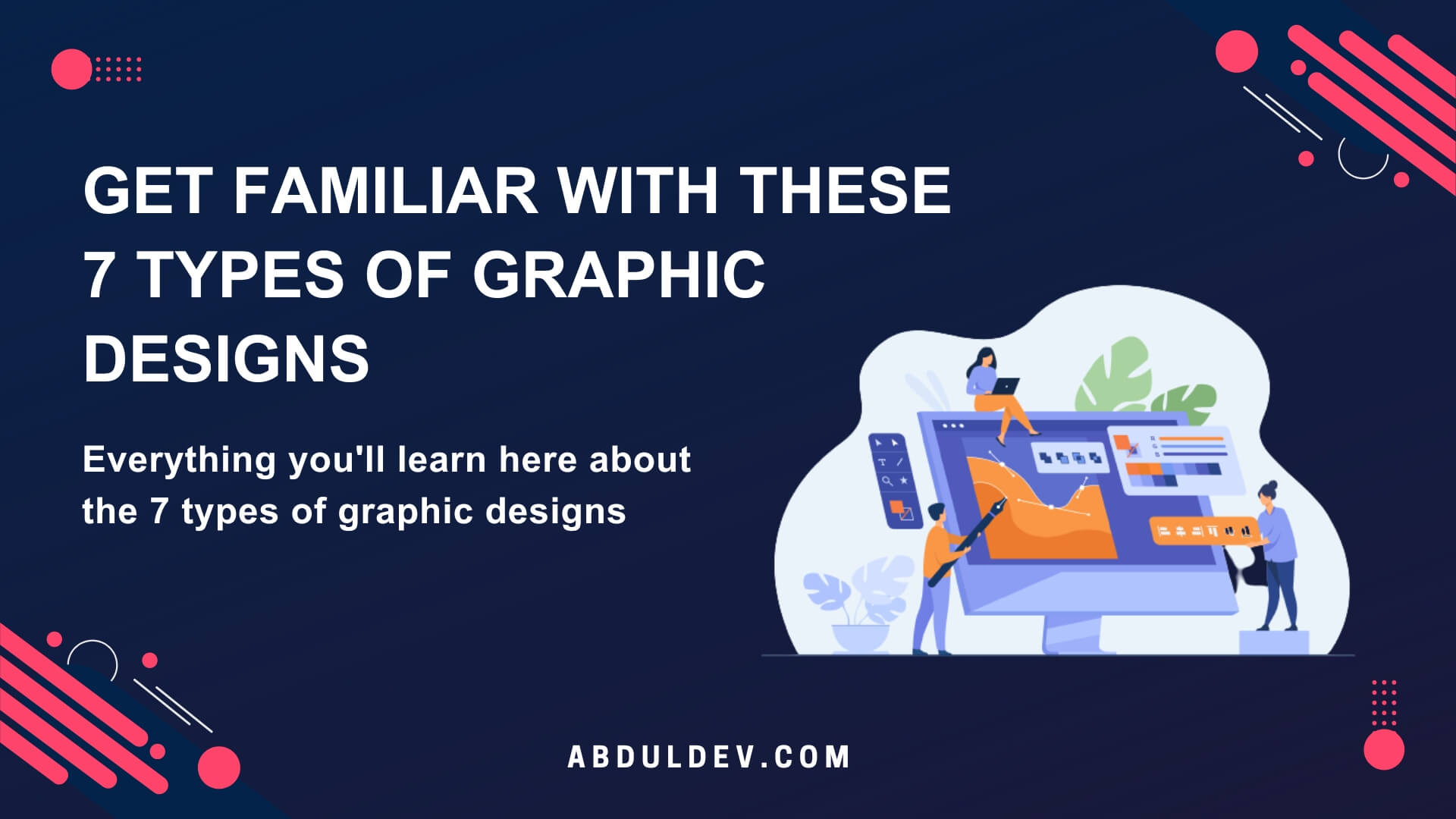
Get Familiar with These 7 Types of Graphic Designs
Discover the different types of graphic design and explore how each plays a unique role in the creative industry. From

The 12 Must-Try Graphic Design Software Programs for Novices
Do you want to know the best graphic design software? Check out my article, which comprehensively guides you to finding
At AbdulDev, our mission is to support learners and developers by sharing helpful, easy-to-follow tutorials on modern web technologies like HTML, CSS, JavaScript, ReactJS, and PHP.
Useful Links
Copyright© 2025 | abduldev




